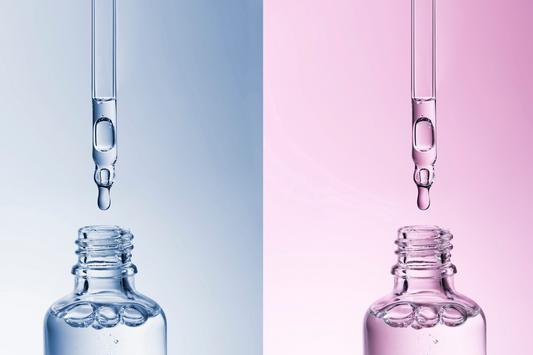If you have been trying to find ways to slow down hair loss or if you’re researching ways to increase hair growth, you might have learned about how the hair growth cycle works and how the hair follicles support new hair growth. You may have also come across the term “hair follicle miniaturization.” In this article, we’ll discuss what this means, how it relates to hair growth and hair loss, and discuss some simple steps you can take today to maintain good hair follicle health and help increase hair growth.
What is Hair follicle miniaturization?
Hair follicle miniaturization is the medical term for when hair follicles get smaller, constricting and forcing the hair strands that grow from that follicle to become thinner and thinner. These thin hairs are much more fragile, breaking off and falling out much more easily and more frequently. And not only do hair strands fall out more often, hair follicle miniaturization also leads to the appearance of thinner, less voluminous hair. So if you’re looking for reasons why you might be seeing hair loss, hair follicle miniaturization is likely a major part of it.
What causes hair follicle miniaturization?
One cause for hair follicle miniaturization is genetics; past scientific evidence suggests that hair loss, especially baldness, is up to 80% influenced by genetics and particularly the AR gene found on the X chromosome. A study on over ten thousand people of European ancestry found that people with the gene were more than twice as likely to develop male pattern baldness than those without the gene. While hair follicle miniaturization doesn’t always contribute to male pattern hair loss, there is substantial evidence suggesting it is a big cause for this phenomenon.
Another cause for hair follicle miniaturization is aging; as you may know, your hair tends to get thinner and fall out as you age. When your body gets older and your cells replicate more frequently, it’s natural for them to become less efficient. This can cause your hair follicles to shrink, in turn causing hair follicle miniaturization.
The last potential cause for hair follicle miniaturization is high levels of dihydrotestosterone, or DHT. DHT has long been associated with hair loss and is the main hormone responsible for hair follicle miniaturization. Hair strands have a life cycle that consists of a growth phase, transition phase, and a resting phase, after which hair falls out. DHT causes the hair cycle to shorten, causing hair strands to fall out more frequently.
How to slow down hair follicle miniaturization
Although hair follicle miniaturization is a natural phenomenon, it can be tough to deal with. And if you do find that you’re experiencing hair follicle miniaturization, here are some ways to stop hair loss and prevent your hair from breaking off.
- Eating a healthy, well-balanced diet: Consuming foods with nutrients like antioxidants (compounds that can “slow down” aging in cells) will help to slow the inevitable process of hair follicle miniaturization, especially as you age. Foods with plenty of antioxidants include kale, blueberries, and pecans.
- Reducing sun exposure: Hair is easily damaged and broken by too much exposure to the sun’s harmful ultraviolet rays. This combined with hair follicle miniaturization can prove a dangerous combination leading to hair loss. Consider wearing a hat or carrying a parasol on especially sunny days to protect your hair. Also remember to wear sunscreen to protect the rest of your skin as well!
- Avoiding heat and other chemical treatments: The NIH linked heat and chemical treatments such as dying and perming to increased hair loss. Similar to the sun’s effect, your hair could be even more prone to breaking alongside hair follicle miniaturization. Consider avoiding these procedures to help prevent hair follicle miniaturization and hair loss.
Conclusion
Now that you know a little bit more about hair follicle miniaturization and how it can cause increased hair loss, we hope you’ll consider some of our three simple steps for slowing down hair follicle miniaturization and hair loss! If you’d like to consider a topical serum solution for hair loss, consider Revela’s Hair Revival Serum. The Hair Revival Serum features ProCelinyl, the world’s first and only ingredient specifically discovered to improve hair follicle health and the appearance of thicker, fuller hair. Find out more here!
Sources
- https://www.healthline.com/health/cosmetic-surgery/hair-miniaturization#takeaway
- https://www.hairclub.com/blog/what-hair-miniaturization-how-tell-if-its-happening-you
- https://www.healthline.com/health/baldness-gene
- https://www.healthline.com/health/dht
- https://www.ncbi.nlm.nih.gov/pmc/articles/PMC5308812/
- https://www.statnews.com/2016/02/04/hair-loss-age/
- https://www.ncbi.nlm.nih.gov/pmc/articles/PMC3229938/





